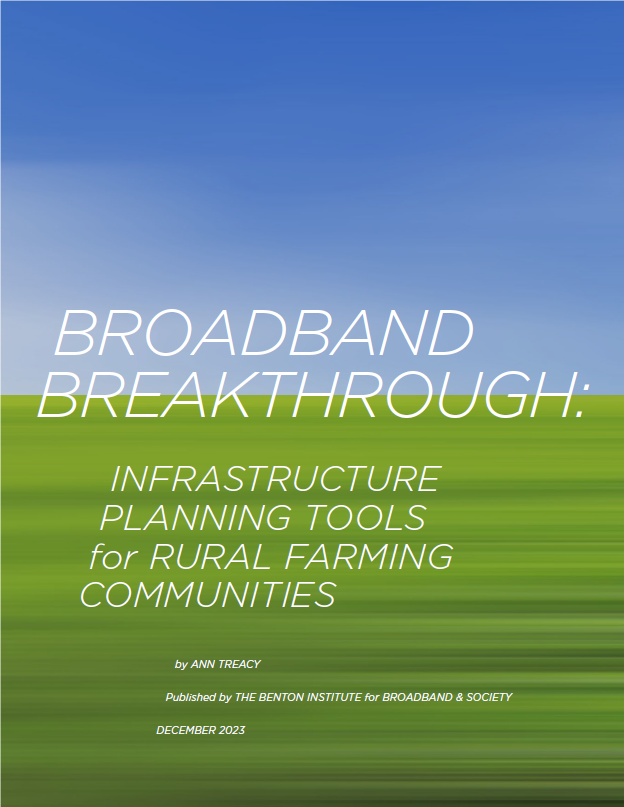Broadband Breakthrough: Infrastructure Planning Tools for Rural Farming Communities
A Benton Institute for Broadband & Society publication written by Ann Treacy
This report follows the journey of five rural counties in Illinois (Edgar, Hancock, McLean, Ogle, and Schuyler) that enrolled in the Broadband Breakthrough community engagement and broadband planning program and used the resources and open-source tools the program provides to pursue a better broadband future. The goal of Broadband Breakthrough and this report is to help rural farming communities understand the value of improved broadband access—and the resources, tools, and work required to get better broadband and chart a path for smart farming.
The program focuses on rural farming communities because today, broadband is a necessary tool to innovate farming practices and allow for sustainable, targeted, and efficient resource use. Agriculture production is poised to enjoy a significant productivity increase with the use of technology and data management. But what is known as “precision agriculture” is constrained by lack of access to high-performance broadband service. Farmers need connectivity in the farmhouse, in the farm office, and in their fields to increase crop yields and quality while more efficiently using inputs like fertilizers, pesticides, and irrigation water. And farming communities need broadband to benefit from online applications in health, work, and learning, to spur economic development, and to enhance quality of life. Inadequate broadband limits productivity and growth, and, according to the United Soybean Board’s 2023 strategic plan, it hinders “the ability of farmers to connect to markets, information, and each other.”
With support from the United Soybean Board, the Benton Institute for Broadband & Society gathered collaborators for Broadband Breakthrough who helped communities understand their broadband needs, assets, and options.
- The Illinois Broadband Lab, a collaboration driven by the Illinois Office of Broadband and the University of Illinois System, presented maps of where robust broadband is and is not in these five counties so communities and their chosen internet service providers can focus on where to build reliable networks capable of robust download and upload speeds.
- University of Illinois Extension helped communities create surveys that asked residents about the quality of their broadband service, including speeds. Illinois Extension analyzed survey results for the communities and educated them on how to use the data.
- A research team at Illinois State University (ISU), through funding support from the Illinois Innovation Network, provided two open-source tools that helped communities quantify the value of high-performance broadband based on its impact on the farming economy and mapped vertical assets that might be used while deploying broadband networks.
- A Wireless Research Center report helped communities assess the benefits and challenges of various modes of wireless broadband in a rural setting as a supplement to wired connectivity.
The Illinois Soybean Association introduced the Benton Institute for Broadband & Society to the ISU researchers, fostered a relationship with the Illinois Farm Bureau, provided convening space and support, leveraged its network of 43,000 soy farmers for essential communications outreach, and is providing funding for continuation of the Broadband Breakthrough program in Illinois in 2024.


